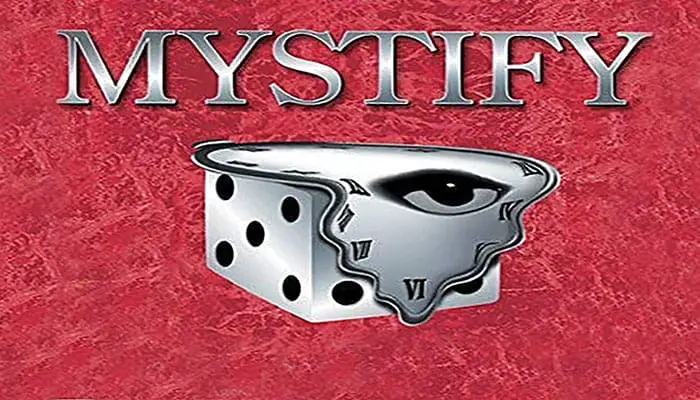
Components

- 1000 scrambles on 200 cards
- Game board
- 30 sec Sand timer
- Pawns
- Pencils
- Notepad
- Instructions
Object of the Game
Players race to solve Scrambles and advance on the game board as Scrambles are solved. The first player to reach the 'Finish' space is the winner of the game.
Setup
-
Each player takes a pencil, a pad/sheet of paper, and a playing piece, which is then placed on the 'Start' space.
-
Players roll the die to select the card reader for the opening round - highest roll goes first. The card reader's role is to present the Scramble for the round.
The card reader does not participate in the solving of the Scramble. At the end of the round, the player to the card reader's left becomes the new card reader (the rotation is always clockwise).
-
Each game card has five different categories - Names, Numbers, Etcetera, Places & Things, Clueless. As you can see from the cards, these categories correspond to numbers on the die: '1' for Names, '2' for Numbers, '3' for Etcetera, '4' for Places & Things, '5' for Clueless.
In each round, the category from which the card reader reads the Scramble depends on what number he/she rolls. If, for instance, the card reader rolls a '1', the card reader presents the Scramble from the Names category.
When the card reader rolls a '6', the card reader gets to select the category (without first looking at the game card).

Game Play
-
The card reader rolls the die to select the category for the round ('1' for Names, '2' for Numbers, etc).
The card reader then pulls a card from the card box and reads out the letters/digits in the Scramble for the category slowly and clearly as they appear on the card. The other players record these letters/digits on their sheets.
-
After the scrambled letters/digits are read aloud, the card reader gives the clue which is on the card - it might be 'Female First Name', 'Food', etc. The clue must only be given after the letters/digits have been read out.
Note: in the Clueless category, no clue is given because the Scrambles are of everyday words.
-
Once the letters/digits of the Scramble are read out and the clue is given, the timer is immediately turned over.
-
While the timer is running, players attempt to solve the Scramble by rearranging the letters/digits until the answer appears before their eyes. Players are allowed only one guess as to the answer and then they are out of the round - so be sure before you blurt out a guess!
-
If players are still stumped when the timer initially runs out, the card reader gives out the first letter/digit of the answer and then immediately turns the timer over again (hence, players are given another 30 seconds in which to guess the answer, this time knowing the first letter/digit of the answer).
-
The first player to say the correct answer aloud, before time runs out, wins the round. That player then rolls the die to see how far they may move their playing piece (ie. roll a '5' and move forward 5 spaces).
However, if players cannot solve the Scramble in time, the card reader wins the round - and rolls to move ahead.

Notes on Play
If you are asked to unscramble the name of a person (e.g. 'Famous Actress'), you are looking for the last name only.
Although it may be possible in some cases to derive two apparently valid answers from the same set of letters (e.g. LEMON and MELON), the answer given on the card should be taken as correct.
The Numbers category can be tricky. Remember that zeros may appear at the beginning of the Scramble. If you don't know the answer to a number Scramble - whether it is a particular date, a measurement, etc - take a guess (you may get lucky)!
Variations on Game Play
Only 2 Players/teams:
When there are only 2 players or teams, Mystify is played in a head-to-head format. Each player/team takes turns being the card reader, while the other player/team tries to solve the Scramble before time runs out.
Note: in this version, if you give the correct answer within the first 30 seconds, add '3' to your roll.
More Than 6 Players/teams:
Mystify may be played by groups of any size. For larger gatherings - parties, classrooms, etc - the game may be altered as follows:
instead of relying on the board, write the names of players on a sheet of paper and appoint someone as scorekeeper
the card reader selects the category by rolling the die (i.e. '1' for Names, '2' for Numbers, and so on -- if you roll a '6' it is 'Your Choice')
the winner of each round (the Scramble-solver) is given 5 points
you decide on the point total to be reached to win.
Continue Reading

